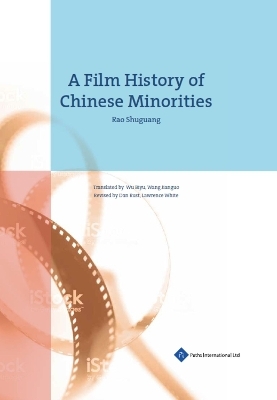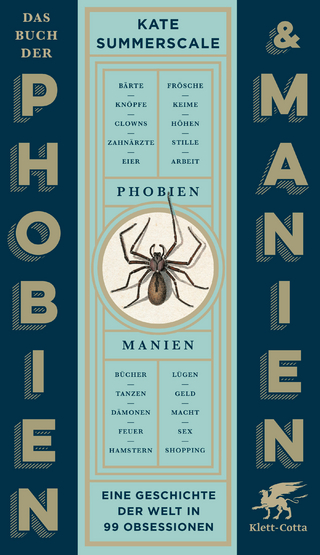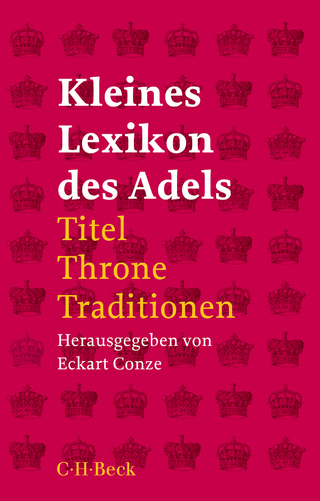
A Film History of Chinese Minorities
Paths Publishing Group (Verlag)
978-1-84464-458-2 (ISBN)
The book is a chronological study of the history of films related to Chinese minorities from the period of 1927 through 2010 focusing on many aspects such as their themes, cinematic story-telling styles, ideological impact, and their commercialization and globalization. The book also takes a look at these films regarding Chinese Minorities in order to provide definitions and explore the areas of female imagery, features of TV films, film-making strategies and more.
The author divides the history into seven stages. The first stage begins in 1927, the year when Mulan, the first film related to the theme of Chinese minorities, was produced, and ends in 1949, the year when the People’s Republic of China was founded. The second stage lasts from 1949 to 1955, featuring The Victory of the People of Inner Mongolia as the first Chinese minority themed film. The policy of “letting a hundred flowers blossom and a hundred schools of thought contend” heralds the third stage (1956-1959). The fourth stage (1960-1976) is considered a period of twists and turns. The film-making is compared to “dancing with shackles on” due to its stagnation arising from the outbreak of the Cultural Revolution from 1966 to 1976. The fifth stage is from 1977 to 1989, which witnesses the revival of Chinese Minority film-making that came with the reform and opening up policy promulgated in 1978. The sixth stage (1990-1999) is viewed as the transition phase, in which the economic restructuring has an impact on film-making. The seventh stage from 2000 to 2010 is featured by a boom of the market-driven Chinese Minority film industry.
A Film History of Chinese Minorities is of great significance. As for the theoretical significance, the book is good to the film studies and culture studies. As for the practical significance, it helps to understand the Chinese Minority culture. The methodology of the book includes documentation, comparison, analysis and explanation.
Rao Shuguang, the author, a professor, works for the China Film Association as the Secretary-General. He specializes in film aesthetics, film history and contemporary Chinese film. Wu Biyu, one of the translators, an associate professor of English at East China University of Science and Technology. Her research interests include Linguistics and Translation Studies. She has published over 50 academic articles, two monographs and four translated books. Wang Jianguo, one of the translators, a professor of English at East China University of Science and Technology. His research interests include E-C Contrastive Studies, Translation Studies, and Pragmatics. He has authored over 80 academic articles and two monographs.
Chapter 1 Chinese Minority-Themed Films Before 1949
Chapter 2 Minority-Themed Film Production in the Early Years of New China (1949-1955)
2.1 The Story of Two Names, One Film
2.1.1 Production of The Inner Mongolian Springtime
2.1.2 Revision of The Inner Mongolian Springtime
2.1.3 Victories in Inner Mongolia
2.2 Film Policies and Minority-Themed Filmmaking
2.2.1 The Film Steering Committee
2.2.2 Policy-Oriented Minority-Themed Filmmaking
2.2.2.1 Plot Stereotyping
2.2.2.2 Formulization of Character Images
2.3 The Revival of Minority-Themed Filmmaking
2.3.1 Directors’ Personalized Artistic Pursuits
2.3.2 Use of Ethnic Customs
2.3.2.1 Depiction of Love Stories
2.3.2.2 Music and Songs
2.3.2.3 Customs and Clothes
2.3.2.4 Exotic Landscapes
Chapter 3 Minority-Themed Film Production and the “Double-Hundred Policy” (1956-1959)
3.1 The “Double-Hundred Policy” and Minority-Themed Film Production
3.1.1 Various Minority-Themed Films from Changchun Film Studio
3.1.2 Minority-Themed Adventure Films from Shanghai Film Studio
3.2 The Tide of Film Creation in 1959 and Minority-Themed Films
3.2.1 Minority-themed Tribute Films: The Classics
3.2.2 Other Minority-Themed Films: Borderland Construction and the Elimination of Bandits
Chapter 4 A Tumultuous Period in the Minority-Themed Film Industry (1960—1966)
4.1 The First Boom in the 1960s
4.1.1 Operas and Dramas
4.1.2 Democratic Reform and Class Friendship
4.2 Fettered Production of Minority-Themed Films (1961-1965)
4.3 Summary
4.4 Minority-Themed Film Production and the “Three Highlights Principle”
Chapter 5 Minority-Themed Films in the New Era (1977—1990)
5.1 The Inheritance and Revival of Ethic Minority-Themed Films
5.2 The Development of Minority-Themed Films
5.3 The Diversification and Commercialization of Minority-Themed Films
5.4 Identity and Awakening: The Emergence of Ethnic Directors
Chapter 6 The Minority-Themed Film Industry During the Transitional Period (1990—2000)
6.1 Minority-Themed Films by Guang Chunlan
6.2 Minority-Themed Films by Sai Fu and Mailis
6.3 Three Minority-Themed Films by Xie Fei
6.4 The Story of Yunnan and Other Minority-Themed Films by Zhang Nuanxin
6.5 “Main Melody”Narratives in Minority-Themed Films
Chapter 7 Chinese Ethnic Minority-Themed Films in the New Century (2000—2010)
7.1 Famous Senior Directors and Their Films
7.2 New Talented Young Directors and Their Films
7.3 Cinematic Storytelling Using an “Fundamental Ecology” Style
7.4 The Commercialization of Minority-Themed Films
7.5 Child- Focused Films
7.6 Trends in Development
Chapter 8 Cinematic Storytelling Using Female Images in Chinese Minority Films
8.1 Women in Film-Making during The Seventeen Years Period
8.1.1 A Mediator
8.1.2 A Sufferer in the Past, a Pioneer in the Present
8.1.3 A Leader and Role Model
8.1.3.1 Maidens Who are Beautiful and Versatile
8.1.3.2 Deity Faithful to Love
8.2 In the Era of Reform and Opening up
8.2.1 The 1980s
8.2.2 The 1990s
8.2.3 The 21st Century
8.2.3.1 Sassy, Modern Girls
8.2.3.2 The Tibetan Goddess in a Love Saga
8.2.3.3 The Great Mother in Hard Times
8.2.3.4 Females in a Primitive Environment
Chapter 9 The Chinese Minority-Themed Television Film Industry
9.1 A Survey of Minority-Themed Film Productions
9.1.1 Stage One (1999-2000): Traditional Serious Films
9.1.2 Stage Two (2001?2004): Diversifying Styles
9.1.3 Stage Three (2005?2009): Improving Quality as a Whole and Further Diversification of the Styles
9.1.3.1 Realistic Themes
9.1.3.2 Revolutionary History Themes
9.1.3.3 Genre Specific Films
9.2 Production Features of Minority-Themed Television Films
9.2.1 The Production Team
9.2.2 The Themes and Features
9.2.3 The Features of Genre Related Films
Chapter 10 Developmental Strategies and Policies for Chinese Minority-Themed Films
10.1 Definitions and Some Related Questions
10.2 Strategies and Significance
References
Appendix I List of Chinese Minority Films
Appendix II Brief Introduction of China’s 56 Nationalities
Appendix III List of Non-Chinese Minority Films
Postscript
| Erscheinungsdatum | 14.06.2018 |
|---|---|
| Übersetzer | Wu Biyu, Wang Jianguo |
| Sprache | englisch |
| Maße | 167 x 246 mm |
| Gewicht | 333 g |
| Themenwelt | Kunst / Musik / Theater ► Film / TV |
| Kunst / Musik / Theater ► Theater / Ballett | |
| Geschichte ► Teilgebiete der Geschichte ► Kulturgeschichte | |
| Sozialwissenschaften ► Kommunikation / Medien ► Medienwissenschaft | |
| ISBN-10 | 1-84464-458-8 / 1844644588 |
| ISBN-13 | 978-1-84464-458-2 / 9781844644582 |
| Zustand | Neuware |
| Haben Sie eine Frage zum Produkt? |
aus dem Bereich


